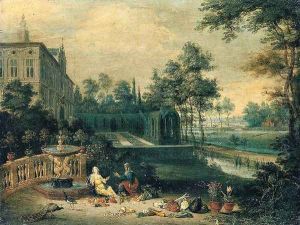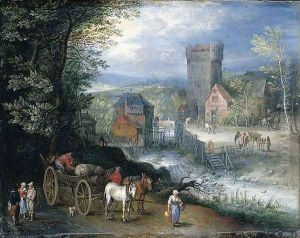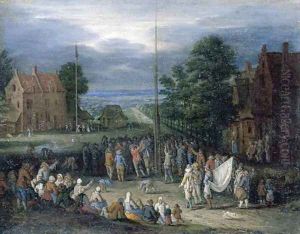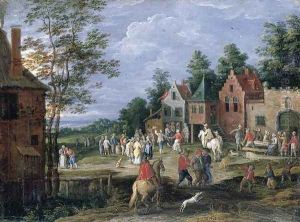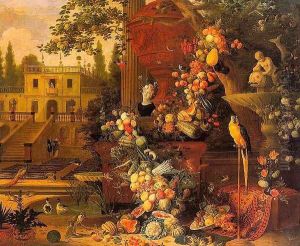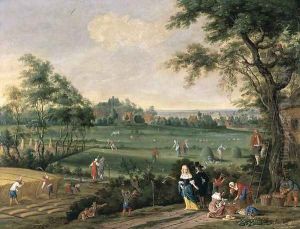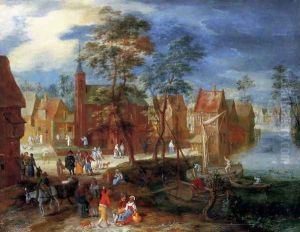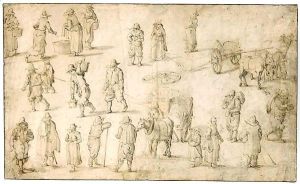Pieter Gijsels Paintings
Pieter Gijsels was a Flemish painter, draughtsman, and engraver born in Antwerp in 1621. He is known for his work during the Baroque period, a time characterized by exuberant detail, deep color, and a sense of movement. While Gijsels' early life and training are not extensively documented, he is believed to have been a student of the landscape painter Alexander Keirincx. Keirincx was a follower of Jan Brueghel the Elder, which suggests that Gijsels’ style was influenced by the Brueghelian tradition of landscape and still life painting.
Gijsels became a master in the Antwerp Guild of St. Luke in 1647, which indicates that by his mid-twenties, he had achieved a level of skill and recognition necessary to be accepted into this prestigious guild. His paintings often depict lush, idyllic landscapes filled with figures, animals, and detailed foliage, while also incorporating mythological or biblical scenes. In addition to landscapes, Gijsels was known for his still life compositions, particularly those featuring flowers and garlands, which were popular in the Flemish art market at the time.
Throughout his career, Gijsels collaborated with other artists, a common practice in the 17th century. He would often paint the landscape or still life portions of a piece, while figures and animals would be added by other artists who specialized in those subjects. This collaborative approach allowed for the creation of complex, multi-faceted works that combined the talents of various artists.
Pieter Gijsels' work was well-received, and his paintings were sought after by collectors during his lifetime. He continued to work and contribute to the art scene in Antwerp until his death in 1690. Today, his paintings can be found in various museums and collections, contributing to the rich tapestry of Flemish Baroque painting. His legacy lives on through his contributions to the genres of landscape and still life painting, showcasing the lushness and vibrancy of the natural world.
